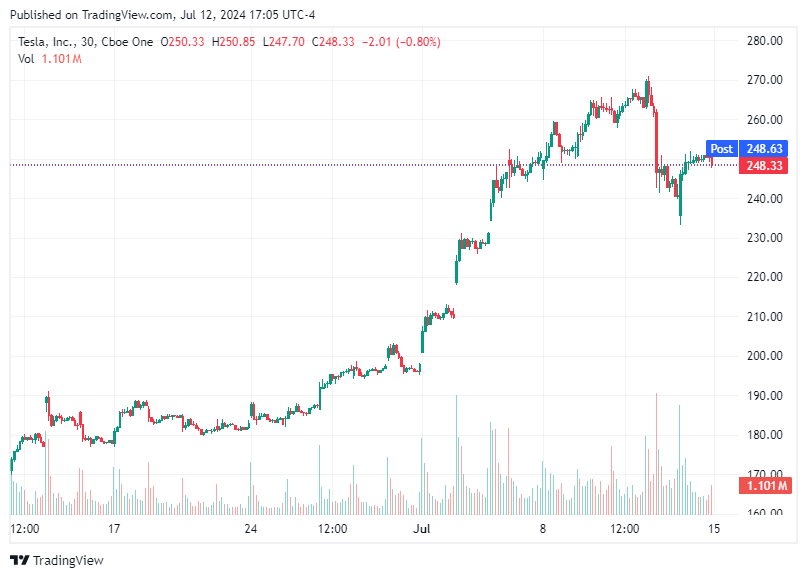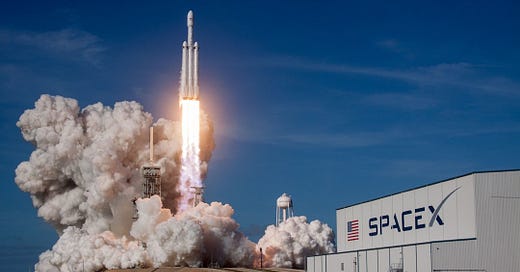SpaceX Falcon 9 Encounters In-Orbit Failure During Deployment
SpaceX Falcon 9 Experiences Rare In-Orbit Failure During Starlink Deployment.

Disclaimer: The following article is a detailed, neutral account of the events surrounding the recent failure of SpaceX's Falcon 9 rocket during a Starlink deployment mission. This information is provided for general knowledge and should not be used as a definitive source for any technical, commercial, or promotional purposes.
Real-time information is available daily at https://stockregion.net
On Thursday evening, SpaceX's Falcon 9 rocket encountered an unusual in-orbit failure while deploying a batch of its Starlink satellites. A rare setback for SpaceX, a company renowned for its reliable launch vehicles. The Falcon 9, often hailed as the most dependable launch vehicle in history, experienced a catastrophic error during a routine mission, highlighting that even the most advanced space technologies are not immune to occasional mishaps.
The malfunction occurred during the second stage of the launch, which is crucial for placing satellites into their designated orbits. According to SpaceX CEO Elon Musk, the failure was due to the Merlin Vacuum engine's inability to reignite for the second and final time, leading to what is known in the industry as a "RUD" (Rapid Unscheduled Disassembly) — essentially a catastrophic explosion. The mission, designated Starlink 9-3, launched from California’s Vandenberg Space Force Base at 7:35 p.m. PST. Shortly after liftoff, the live stream displayed an unusual amount of ice build-up on the engine, with large clumps detaching and falling into the exhaust plume. This anomaly suggested a possible leak of liquid oxygen, a critical component of the engine propellant alongside kerosene. Despite the successful deployment of 20 Starlink satellites, they were released into an incorrect orbit, raising concerns about their ability to achieve the intended operational altitude.
Musk took to his platform X to provide updates and attempted to reassure stakeholders. He revealed that the SpaceX team was actively reviewing data to understand the root cause of the upper stage failure. The preliminary hypothesis focused on the ice build-up observed during the launch, but further analysis was needed to confirm this. SpaceX reported that it had established contact with five of the deployed satellites and was attempting to adjust their orbits using onboard ion thrusters. These efforts involved updating the satellite software to maximize thruster efficiency, although Musk expressed skepticism about the likelihood of success.
Reliability and Previous Failures
The recent failure is notable against the backdrop of SpaceX's impressive streak of 335 flawless launches across its Falcon family of rockets, including the more powerful Falcon Heavy. This record includes 96 successful launches in 2023 and 69 in 2024, presenting the reliability that has become synonymous with the Falcon series. Tthe Falcon 9 has not been entirely free of issues. The last major error occurred in 2016, when a rocket exploded on the pad during pre-launch testing. Before that, in 2015, the rocket's upper stage disintegrated shortly after liftoff. These incidents serve as reminders of the inherent risks associated with space travel, despite advancements in technology and safety protocols.
The Federal Aviation Administration (FAA) acknowledged the anomaly and confirmed that no public injuries or property damage resulted from the incident. An FAA spokesperson indicated that an investigation was underway to determine the cause of the upper stage failure. This inquiry is crucial not only for understanding the root cause but also for ensuring the safety and reliability of future missions. The timing of the failure is particularly significant given its potential impact on upcoming critical crewed launches. These include the Polaris Dawn private spaceflight mission, funded by billionaire Jared Isaacman, scheduled for the end of the month, and an astronaut transportation mission for NASA in mid-August. The outcomes of the investigation will likely influence the scheduling and preparedness of these missions.
SpaceX and the Industry
The second stage's Merlin Vacuum engine is designed to reignite to boost payloads into higher orbits. The failure to do so suggests potential issues with the engine's components or the propellant system. The presence of ice build-up points to a possible leak of liquid oxygen, which could have compromised the engine's performance. Ion thrusters, which are now being relied upon to correct the orbits of the mis-deployed satellites, use electric propulsion to generate thrust. While they are efficient for long-duration missions, their thrust is relatively low compared to traditional chemical propulsion. This makes the task of raising the orbits of the satellites within a limited timeframe particularly challenging.
The incident serves as a poignant reminder of the challenges and risks associated with space exploration and satellite deployment. SpaceX's ambitious goals, including the deployment of thousands of Starlink satellites to provide global internet coverage, depend on the consistent performance of its launch vehicles. Any failure not only affects immediate missions but also has broader implications for the company's projects and its reputation. For the space industry at large, such failures highlight the importance of rigorous testing, continuous improvement, and transparent communication. They also reinforce the need for robust contingency plans to mitigate the impact of unexpected anomalies.
As SpaceX works to analyze and address the failure, the aerospace community and stakeholders will closely monitor the findings and their implications for future missions. The company’s track record of innovation and resilience suggests that it will learn from this setback and continue to push the boundaries of space exploration.
Disclaimer: This article is intended for informational purposes only and does not constitute technical advice or an endorsement of any specific technology or company. The details provided reflect the events as understood at the time of writing and may evolve as further information becomes available.
Real-time information is available daily at https://stockregion.net




